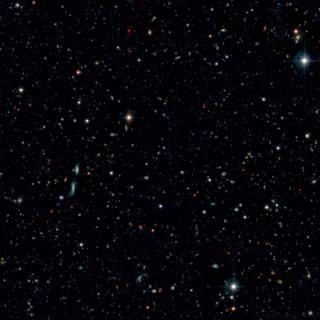Rosario, D. J.; Santini, P.; Lutz, D.; Shao, L.; Maiolino, R.; Alexander, D. M.; Altieri, B.; Andreani, P.; Aussel, H.; Bauer, F. E.; Berta, S.; Bongiovanni, A.; Brandt, W. N.; Brusa, M.; Cepa, J.; Cimatti, A.; Cox, T. J.; Daddi, E.; Elbaz, D.; Fontana, A.; Förster Schreiber, N. M.; Genzel, R.; Grazian, A.; Le Floch, E.; Magnelli, B.; Mainieri, V.; Netzer, H.; Nordon, R.; Pérez-Garcia, A. M.; Poglitsch, A.; Popesso, P.; Pozzi, F.; Riguccini, L.; Rodighiero, G.; Salvato, M.; Sanchez-Portal, M.; Sturm, E.; Tacconi, L. J.; Valtchanov, I.; Wuyts, S.
Bibliographical reference
Astronomy and Astrophysics, Volume 545, id.A45
Advertised on:
9
2012
Journal
Citations
274
Refereed citations
262
Description
We study relationships between star-formation rate (SFR) and the
accretion luminosity and nuclear obscuration of X-ray selected active
galactic nuclei (AGNs) using a combination of deep far-infrared (FIR)
and X-ray data in three key extragalactic survey fields (GOODS-South,
GOODS-North and COSMOS), as part of the PACS Evolutionary Probe (PEP)
program. The use of three fields with differing areas and depths enables
us to explore trends between the global FIR luminosity of the AGN hosts
and the luminosity of the active nucleus across 4.5 orders of magnitude
in AGN luminosity (LAGN) and spanning redshifts from the
Local Universe to z = 2.5. Using imaging from the Herschel/PACS
instrument in 2-3 bands, we combine FIR detections and stacks of
undetected objects to arrive at mean fluxes for subsamples in bins of
redshift and X-ray luminosity. We constrain the importance of AGN-heated
dust emission in the FIR and confirm that the majority of the FIR
emission of AGNs is produced by cold dust heated by star-formation in
their host galaxies. We uncover characteristic trends between the mean
FIR luminosity (L60) and accretion luminosity of AGNs, which
depend both on LAGN and redshift. At low AGN luminosities,
accretion and SFR are uncorrelated at all redshifts, consistent with a
scenario where most low-luminosity AGNs are primarily fueled by secular
processes in their host galaxies. At high AGN luminosities, a
significant correlation is observed between L60 and
LAGN, but only among AGNs at low and moderate redshifts (z
< 1). We interpret this observation as a sign of the increasing
importance of major-mergers in driving both the growth of super-massive
black holes (SMBHs) and global star-formation in their hosts at high AGN
luminosities. We also find evidence that the enhancement of SFR in
luminous AGNs weakens or disappears at high redshifts (z > 1)
suggesting that the role of mergers is less important at these epochs.
At all redshifts, we find essentially no relationship between
L60 and nuclear obscuration across five orders of magnitude
in obscuring Hydrogen column density (NH), suggesting that
various mechanisms are likely to be responsible for obscuring X-rays in
active galaxies. We discuss a broad scenario which can account for these
trends: one in which two different modes of AGN fueling operate in the
low- and high-luminosity regimes of SMBH accretion. We postulate that
the dominant mode of accretion among high-luminosity AGNs evolves with
redshift. Our study, as well as a body of evidence from the literature
and emerging knowledge about the properties of high redshift galaxies,
supports this scenario.
Herschel is an ESA space observatory with science instruments provided
by European-led Principal Investigator consortia and with important
participation from NASA.Appendices A and B are available in electronic
form at http://www.aanda.org
Related projects

Evolution of Galaxies
Galaxy evolution is a crucial topic in modern extragalactic astrophysics, linking cosmology to the Local Universe. Their study requires collecting statistically significant samples of galaxies of different luminosities at different distances. It implies the ability to observe faint objects using different techniques, and at different wavelengths
Jorge
Cepa Nogue